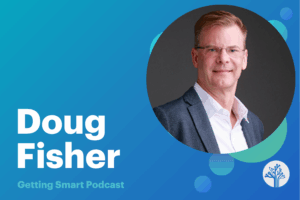Using Student Feedback to (Actually) Drive Change

By Sachi Takahashi-Rial
What if your grade school principal had asked you and your fellow students directly for your feedback? And what if that principal not only listened, but also made changes based on what you said? Your school would have been more successful. At least, that’s what the research says.
Research shows that student perceptions are linked to academic outcomes, and that happy schools can more readily close the achievement gap (curated list of research here). So it makes sense to ask students what their learning environments are really like in order to better relate to their unique perspectives.
More and more schools, districts, and CMOs are gathering student perception data to help make schools better. These are exciting times! But as the student voice movement grows, I hope to see more dialogue about how to turn that student perception data into action.
In my work with schools across the country, I’ve seen feedback data accelerate incredible change. Here are a few tips that I’ve learned from leaders who have gone through the process of asking for, reflecting on, and using student feedback data to make their schools better.
1) Anticipate mixed reactions.
Plan for mixed emotional reactions to the feedback, especially if there are less favorable or surprising findings. That was the case for Dr. Brennan Sapp, principal of Scott High School in Taylor Mill, Kentucky. Before sharing student feedback data with his school staff, Dr. Sapp wisely anticipated some of the common reactions to tough data: defensiveness, dismissiveness, downplaying the negative, and feeling dejected. He anticipated reactions and prepared a plan.
First, he engaged the school’s site-based committee and created intentional spaces to answer questions and build a common understanding of the data. Committee members then used a similar model to share findings with department heads, who then shared the data back with their respective department teams.
To hear more about how Dr. Sapp uses student feedback to drive change, check out the video interview here.
2) Celebrate and prioritize.
Once school leaders have seen the data, come together to identify both bright spots and priorities for change. That’s what Georgeanne Warnock, Associate Superintendent of Carrollton Farmers Branch Independent School District in Texas did. After administering student surveys in the spring, the district dedicated three days over the summer for deep reflection and planning.
Principals and APs from all 37 CFBISD schools gathered for “data days,” which included a half-day YouthTruth workshop. School leaders identified bright spots – areas where the data was affirming of effective practice – and areas where, based on the data, the school needed to consider changes.
“You can’t expect data to be meaningful if you don’t talk about it with others,” Georgeanne says. “The ‘data days’ allowed school-based teams to comb through the findings, share ideas and reflections, and relate it to other data to complete the picture. It might seem impossible to dedicate this much staff time to data, but it was incredibly productive.”
3) For goodness sake, tell the kids “thank you”.
John Boyd, Superintendent of Quincy School District in Washington State, requires that principals close the feedback loop with students after surveying. This makes perfect sense, but it’s amazing how often you hear about students taking surveys and never being told about or involved in what happens with the results.
In Quincy, principals dedicate time and space for dialogue about the student survey data. They put particular focus on how each person – teachers and students – shapes the climate and culture.
First, each principal studies their student feedback data report, just like it’s their own report card – reading every student comment and the ratings for each question. Then, the principal is tasked with meeting with staff to share the reports and pick one area of success and one challenge to put into the school improvement plan.
But that’s not where it ends.The principal then works with the advisory planning teams to develop a one or two-day lesson to discuss the results with the students. Teachers use this advisory time to probe deeper to better understand the students’ experiences. The conversations might meander a bit, but they are always anchored by three core components: (1) thank students for their time and thoughtfulness, (2) share high-level findings, themes and trends, and (3) ask questions to get an even deeper understanding of how students are experiencing their school.
Boyd says, “These three steps have helped us begin to shift the culture from adult-driven to student-centered. And when students are at the center, we know our work is on track.”
Schools don’t need more data, they need better data. They need data that informs effective change. As you think about how student perception data can be used to fuel improvements at your school, I hope you’ll keep the lessons learned from these three leaders in mind.
For more, see:
- Using Student Feedback to Improve School Culture
- 8 Ways School Leaders Can Practice Empathy in Listening
- Listening is a 21st-Century Skill
Sachi Takahashi-Rial is on the Partnerships team at YouthTruth, a nonprofit based in San Francisco, CA. Follow them on Twitter at @SachiTakahashi and @Youth_Truth.
Stay in-the-know with all things EdTech and innovations in learning by signing up to receive the weekly Smart Update.






0 Comments
Leave a Comment
Your email address will not be published. All fields are required.